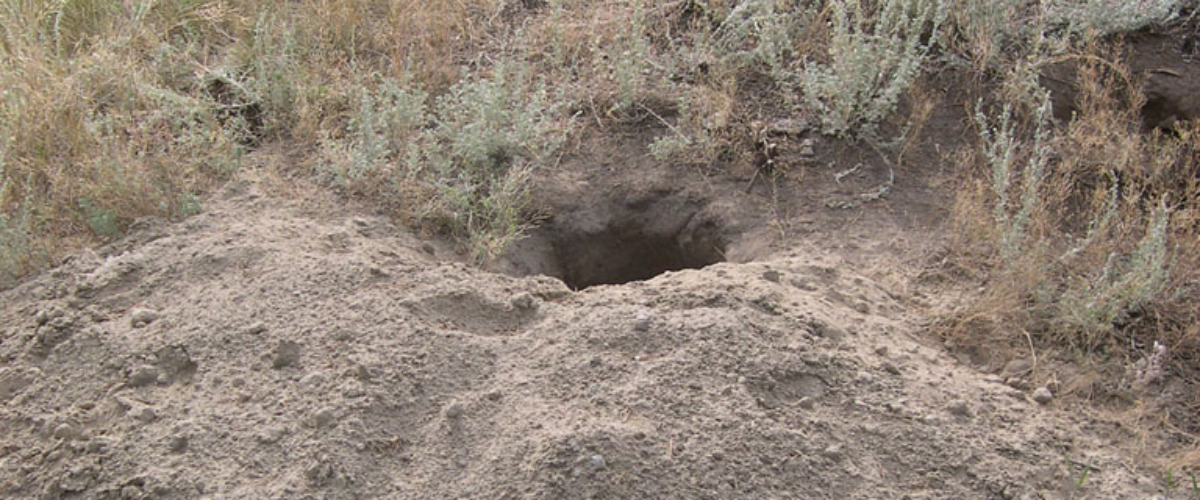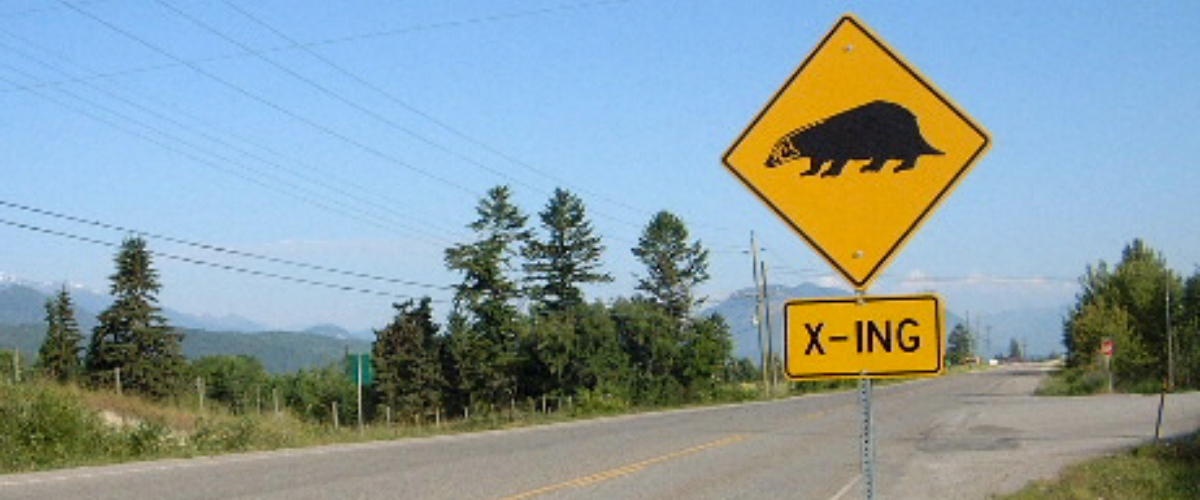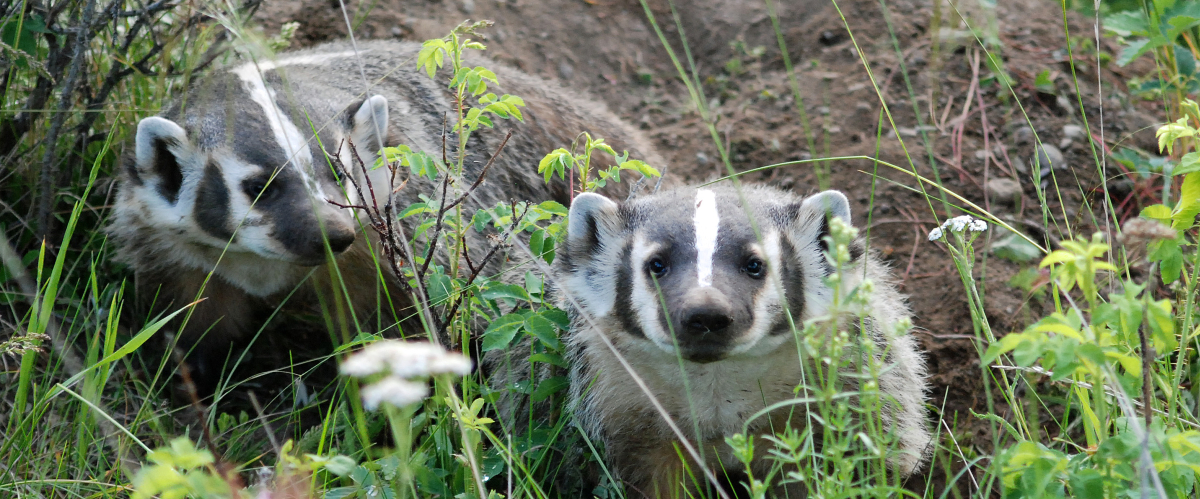
© Richard Klafki
American badger (subspecies jeffersonii)
Kootenay National Park
Quick facts
Eats ground squirrels and other small mammals
Weighs up to 26 lbs (the size of a small dog)
Likes loose soil to dig in
Lives 6 years
SARA status: Endangered (2003)
American Badgers are easily identified by their unique black and white face markings. Long claws help badgers dig burrows to rest in, give birth, raise young and store food. Badgers play a key role in the grassland ecosystem. By digging, they aerate and mix the soil, helping plants to grow. Abandoned burrows are often used as homes by other animals.
Where they live
In Kootenay National Park, American Badgers live only at the south end. Here, open Douglas fir forests mix with dry grasslands. Badgers and their burrows are often found in Redstreak Campground.
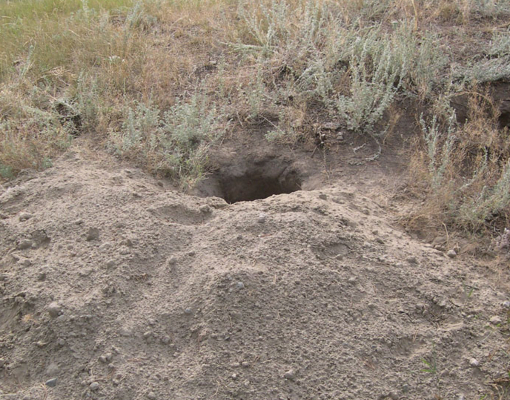
Fresh dirt is piled outside a badger burrow.

A badger travels through open forest habitat.
Why they are at risk

Human-caused mortality
Road mortality is the greatest threat to badgers. They are vulnerable for several reasons:
- badger habitat is typically in valley-bottoms where roads are built
- it is difficult for drivers to see badgers because they are active at night, and have a short stature
- badgers travel long-distances, which increases the chance of crossing a road
- roadsides are attractive to badgers because of soil conditions and the presence of ground squirrels
Habitat fragmentation
Badgers need a lot of space. Their home ranges can be as large as 64 km² -roughly the size of 700 football fields! Both in and outside of the park, human development and activities like towns, roads and railways can break up their habitat.
How Parks Canada is helping
Monitoring
Parks Canada monitors badger activity in the park using remote wildlife cameras and reported sightings from visitors and staff.
Protecting habitat
Historical fire suppression has created large, dense forests. Parks Canada uses prescribed fire to restore open forest and grassland habitat for badgers. Learn more about the Redstreak restoration project.
Protection from human disturbance
There are reduced speed limits on roads in Kootenay National Park, and laws that give wildlife space. New signage and area closures in the Redstreak Campground help protect badgers and their burrows.
Research
Parks Canada is working with the National Badger Recovery Team to reduce highway mortalities and encourage the public to protect badgers.
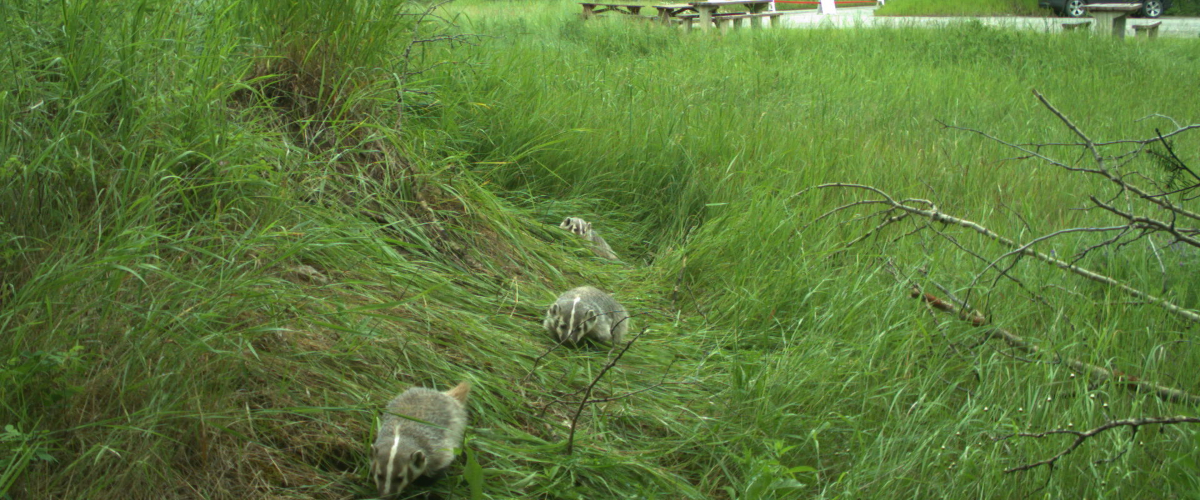
How you can help
If you visit Redstreak Campground and the surrounding area, follow these 5 rules:
- Obey speed limits and be an attentive driver.
- Always keep your pets on leash. It’s the law.
- NEVER feed or entice a badger. Keep a clean campsite or picnic area.
- If you see a badger, keep at least 30 m away to avoid disturbing them. NEVER approach badgers or their burrows.
- Report all badger sightings to Parks Canada at llyk.wildlife@pc.gc.ca
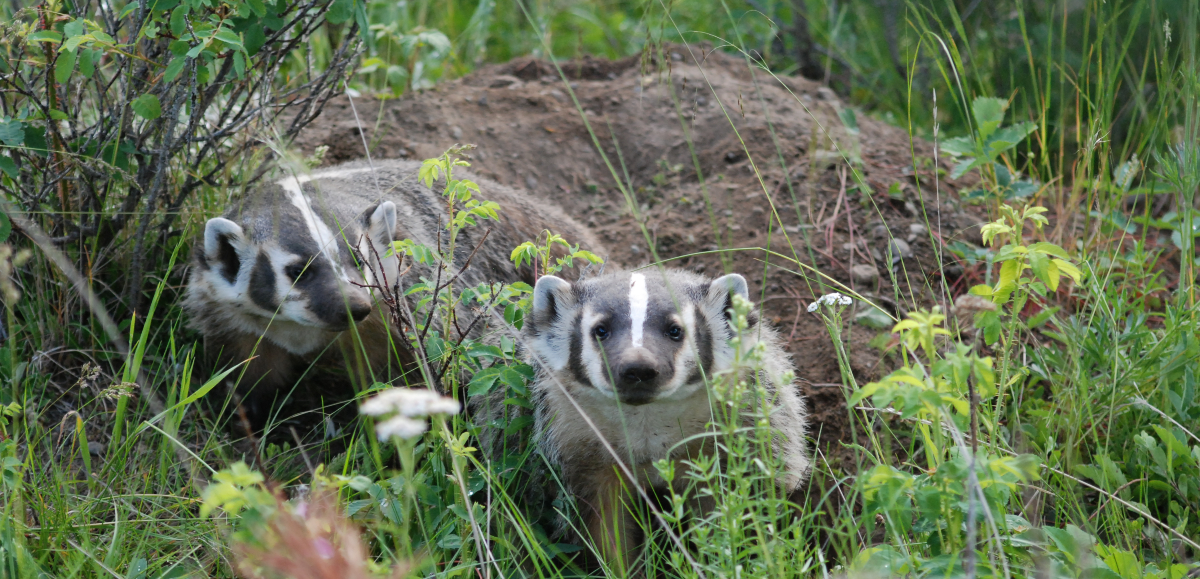
Learn more
- Date modified :
